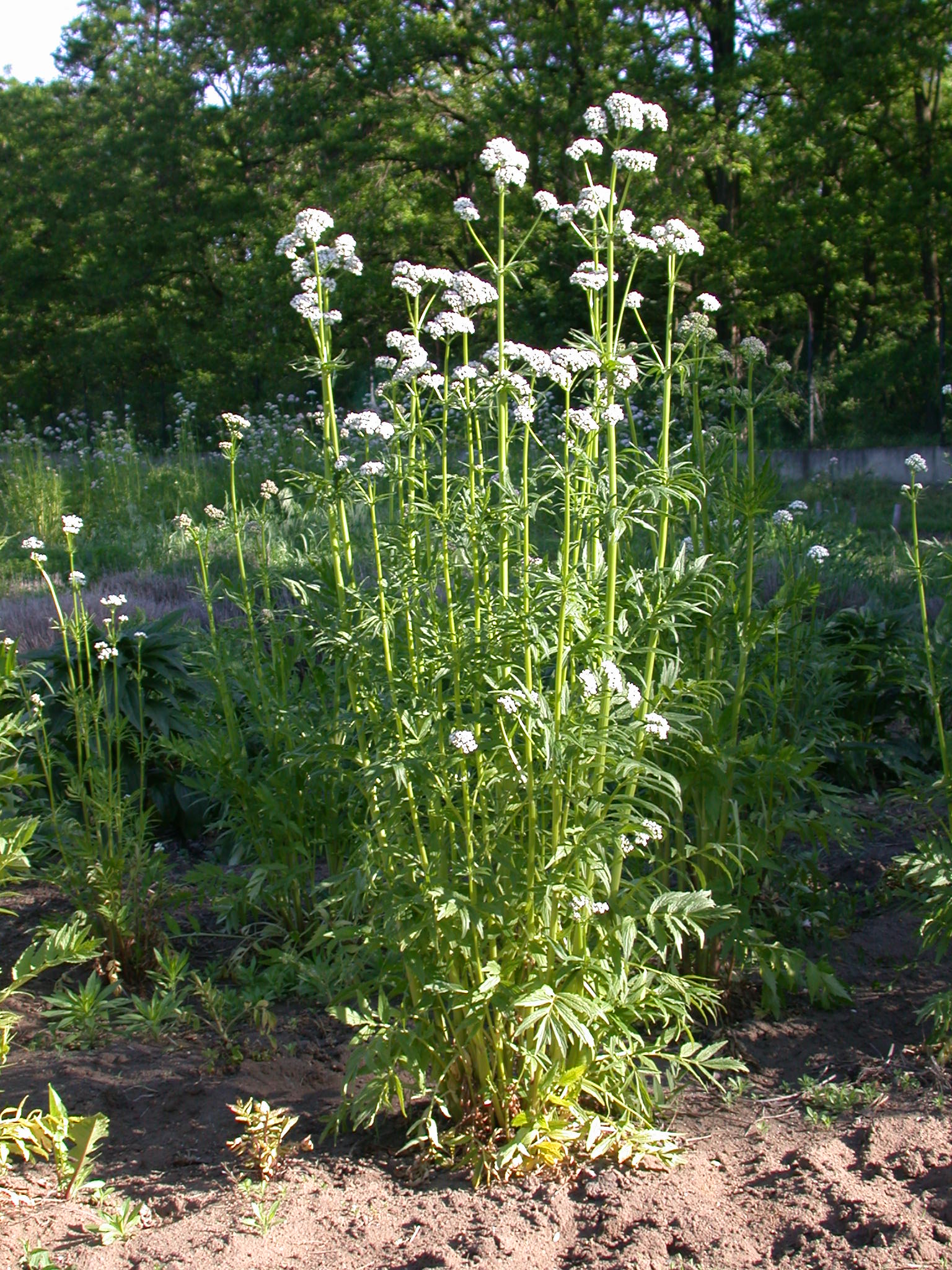Valeriana officinalis L. - Valerian
Valeriana officinalis is a herbaceous, perennial medicinal plant in Valerianaceae family (H). In the first vegetation year only the leaf rosettes grow, from the second year the flowering stems also appear. The rhizomes are short, cylindrical with several spindle-shaped, white lateral root (15-20 cm long, 2-5 mm thick). The stem is erect, it can reach 140-200 cm, hollow, striated, on the upper parts branched. The leaves are odd-pinnate, serrate, on the lower parts of the plant has long leafstalks, on the upper parts has shorter stalks. The inflorescence is terminal, branching umbel-like. The flowers are white or pink with a pleasant odour. The fruit is small, drop-shaped, light-brown achne with topknot. Thousand seed weight: 0.5-0.6 g.
Valerian is native to Europe and parts of Asia, in Hungary it grows wildly too. The seeds need light during the germination. For the best yields valerian needs lot water and nutrient-rich, well drained soil.
The drug (Valerianae radix) consists of the cleaned and dried rhizome and root of the herb (Ph.Hg.VIII., ESCOP-monograph). As it is prescribed, the whole drug contains 4 ml/kg essential oil, 0.17 % valerenic acid, while the cut drug contains 3 ml/kg essential oil and 10 % valerenic acid.
Valerian drug contains 0.4-0.6 % essential oil (mainly with monoterpene compounds, such as borneol and sesquiterpene ketones, acids), valepotriates (0.5-1.5 %) and further sequiterpenes (valerenic acid, hydroxi, acetoxi valerenic acid, valerenal, valeranon).
The active agents of the herb have sedative, spasmolytic effect. The drug is consumed in form of teas, tea-mixtures, combined with lemon balm, hop. Valerian is used for sleeping disorders, restlessness and anxiety, and as a muscle relaxant. The volatile oil, distilled from the roots is also applied. In rare cases, valerian may cause an allergic reaction, typically as a skin rash, hives, or difficult breathing.


